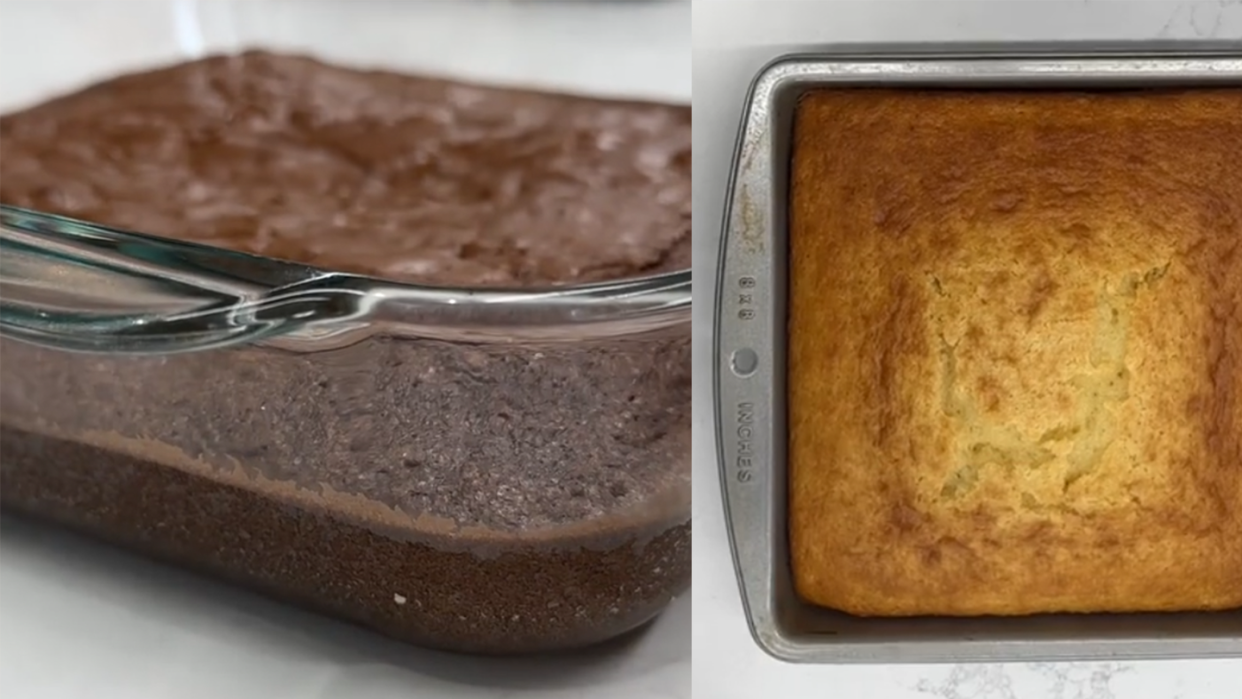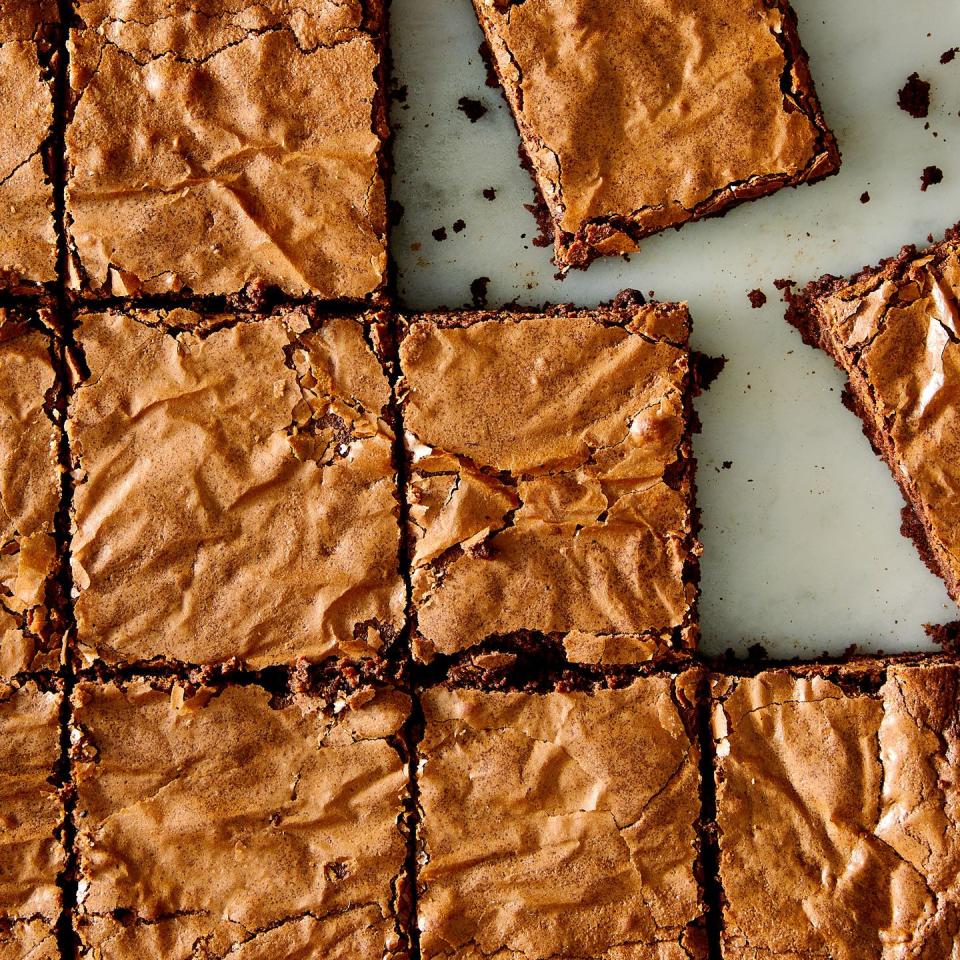Why You Should Never Use This Pan For Baking

My grandma baked everything, from birthday cake to lasagna, in her trusty glass casserole dish. Back then, we never dreamed of questioning her. But now we have to ask, Was that glass casserole dish the best way to go?
While many home cooks might be tempted to stick to a single type of baking pan for all their sweet and savory recipes, food professionals—including our very own senior food editor Makinze Gore—would advise us to consider our baking dishes more carefully.
There’s a big difference between glass and metal pans, and the choice you make can dramatically change the outcome of your baking. Here’s everything you need to know to guarantee kitchen success with your pans.
When To Use Metal Pans
Metal pans are the ultimate choice for most sweet baking. Gore says this is because they conduct heat better than glass pans. They’re quick to heat up and cool down, which means that cakes, brownies, and bars will be evenly baked in the center as well as the edges, and that double-crusted pies will have a greater chance of getting a crisp bottom crust by the time the top is baked through.
Professional bakers typically also prefer metal pans because they’re lightweight and durable, making them easier to transport, store, and replace. The right-angled corners make it easier to cut baked goods into neat, even serving portions.

Metal pans come in a variety of finishes, from light gray aluminum to dark nonstick, and it’s wise to take note of how light or dark they are.
If you are baking in metal, you’ll want to take note of how light or dark your specific pan is. Metal pans come in a variety of finishes, from light gray aluminum to dark nonstick, and those with a dark nonstick coating tend to brown much more quickly around the edges and on the bottom than those with the lighter gray aluminum finish. Because of this, I typically prefer pans with a lighter finish. If you only have dark metal, don’t fret: just be aware that the baked goods might be a bit darker on the edges. When possible, line the pan with parchment to help protect and prevent excess browning.
While metal pans are a fantastic choice for baking most sweets, they’re not always the best choice for savory recipes. Metal may react with acidic ingredients during long bake times, and it also doesn’t retain heat at all, making it less than ideal for things like casseroles or baked pastas. For that, we’ll turn to our next candidate:
When To Use Glass Pans
Glass casserole dishes might look pretty on a potluck table, but they’re not the best choice for baking. Glass is a poor heat conductor, and glass pans take longer to heat up in the oven. The result? Gore says that they can give you brownies or cakes with overly browned or crusty edges or underdone middles that collapse once they’re out of the oven. Glass pans are also heavy and fragile, so on a practical level they’re not as convenient to store or transport baked goods from place to place.
Glass pans might not be ideal for sweet baking, but, as Gore says, “don’t go and throw them away!” A glass pan’s ability to heat up more slowly and retain that heat can actually be an asset if you’re baking something like lasagna or mac ‘n’ cheese. In these cases, you probably want that pan to stay hot—and those crispy edges are just a bonus.
Glass or metal? It’s all about the science here. But you don’t need to be a chemistry expert to bake smarter and ensure your baked goods live up to their full potential. When in doubt, follow Gore’s wise words: “Bake in metal and cook in glass.”
You Might Also Like


